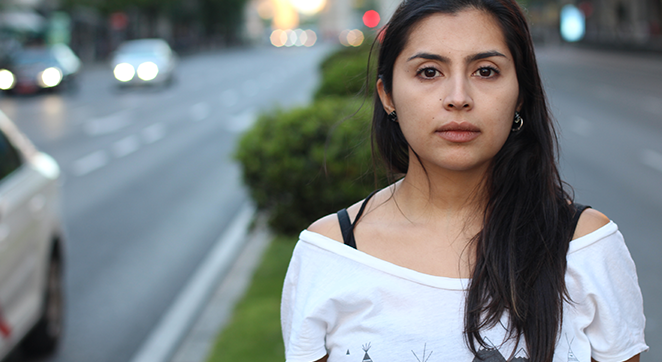Bridge to Safety: Making sure survivors have options
Written by SAFE
When Mira called SAFE, they were looking for a safe place to stay for a week. The violence in their home had reached a new peak and Mira didn’t want to see what would happen next if they stayed. That meant moving back home to Georgia.
The night before Mira called us, they had a fight with their boyfriend. Fighting wasn’t out of the ordinary for them. When the yelling escalated and their boyfriend grabbed their wrists, that felt pretty normal too. But then he punched Mira in the head, which had only happened once before. After he knocked them down, he gathered some of Mira’s belongings—family pictures, clothes, video games—and took them outside. He started a fire in their fire pit and tossed them in.
He was finding new ways to hurt Mira.
They decided that was enough. Mira called a longtime friend who still lived in Georgia. She said Mira could stay with her and her kids. The problem was that the friend had an immunocompromized 12 year old. Mira’s friend was scared to have someone stay with her and her family during the pandemic—especially someone currently living in a COVID-19 hotzone like Travis County. If Mira could quarantine for a week, their friend would open her home up to them.
Mira told our SAFEline advocates all of this and we connected her with our Bridge to Safety program.
Bridge to Safety
Bridge to Safety is a City of Austin-funded program that provides immediate advocacy and financial assistance to people in crisis. Because most shelters for survivors of violence operate with a waitlist, Bridge to Safety allows SAFE to offer other options that will increase people’s safety and keep them housed.
Because of the lack of capacity and the abundance of need, only about 20% of people who request shelter actually receive shelter. Sometimes, our advocates can find an agency that has available shelter outside of Austin, or we can connect survivors with friends or family who can provide a place to stay. Thanks to Bridge to Safety, we have also been able to offer financial assistance with costs such as moving expenses, lock changes, bus tickets, plane fare, short-term hotel stays, and gas cards.
The main entry point to the program is through our 24/7 SAFEline. As advocates screen survivors for our shelter wait list, we also problem-solve to see if Bridge to Safety assistance can help them bypass the need for shelter and get them to safety immediately. The program offers quick assistance and does not offer long-term case management.
It’s interesting to note that the majority of our Bridge to Safety clients are not requesting financial assistance. They need assistance with forms such as address confidentiality paperwork, lease termination due to violence, and other paperwork.
Supporting Mira and others
A Bridge to Safety advocate spoke with Mira’s friend in Georgia to make sure her home would provide a safe place to stay. The friend was eager to help, but understandably cautious about her children’s health.
We found a local hotel where Mira was able to stay for a week—paid for by our Bridge to Safety program. We also gave them a gas card to get to Georgia after quarantining. After a week and a couple day’s travel, Mira made it to safety with their friend.
And since we found a hotel for them in Austin, someone on our waitlist who didn’t have any other options was able to get into Emergency Shelter. Bridge to Safety allows us to support more survivors.